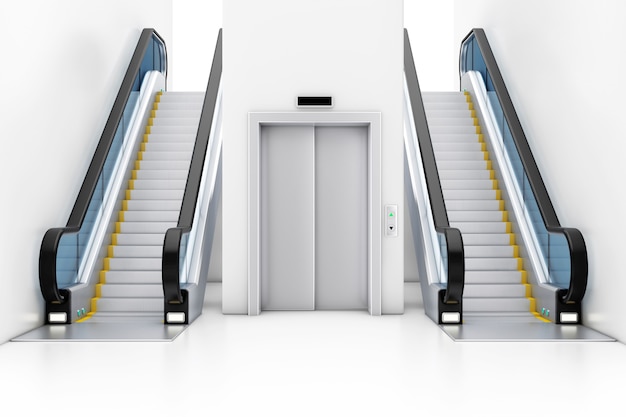Digging Into the World of Lifts: Typical Issues Encountered by Different Lift Mechanisms
As we navigate via the vertical transport systems of modern-day buildings, elevators stand out as a crucial component of our everyday lives. From hydraulic lifts to traction systems and machine-room-less styles, each lift kind comes with its collection of common problems.
Hydraulic Lifts
Hydraulic elevators, typically favored for low-rise structures, utilize fluid pressure to manage the activity of the lift vehicle (lift repair companies). This system entails a hydraulic pump pushing oil into a cylinder, triggering the lift to relocate the desired direction. While hydraulic lifts are recognized for their quiet and smooth operation, they do include their very own collection of usual concerns
One common issue with hydraulic elevators is oil leakage. Furthermore, issues with the control system, such as defective valves or a malfunctioning pump, can cause disruptions in the lift's activity.
Normal upkeep and timely repair work are necessary to make sure the smooth performance of hydraulic elevators. By attending to these usual concerns proactively, structure owners can minimize downtime and ensure the safety and performance of their upright transportation system.
Traction Lifts
When thinking about vertical transportation systems in structures, one more common kind apart from hydraulic elevators is the grip lift. Traction lifts run using a system of ropes and weights that relocate the elevator car by clutching onto the hoist ropes. This system allows for smoother and much faster upright transportation contrasted to hydraulic systems.
One of the usual problems faced by grip elevators is rope wear. The consistent motion of the ropes within the traction system can bring about tear and wear gradually, potentially creating the elevator to breakdown or end up being unsafe for usage. Regular assessments and maintenance of the ropes are vital to make sure the lift's appropriate performance and security.
An additional issue that grip elevators may run into is associated with the control system. Troubles with the control system can result in concerns such as erratic activity, hold-ups in feedback times, and even total closures. Regular screening and upkeep of the control system are important to protect against such problems and make certain the elevator's reliability.
Machine-Room-Less (MRL) Lifts

One of the key parts of MRL lifts is the small gearless traction lift companies in London equipment that is set up within the hoistway. This device efficiently drives the lift cars and truck without the requirement for bulky tools discovered in traditional grip elevators. In addition, MRL lifts generally make use of a weight system to balance the auto, additional enhancing their power efficiency.
Despite their advantages, MRL lifts may deal with obstacles connected to upkeep and repair because of the constrained space for devices installment. Ease of access for servicing parts within the shaft can be limited, needing specialized training for professionals. Proper maintenance routines and normal inspections london lift company are important to make certain the continued smooth operation of MRL elevators.
Overloading and Weight Restriction Issues
Straining and weight restriction concerns are critical concerns in lift procedures. Lift suppliers layout raises with certain weight capabilities to make sure traveler security and equipment longevity.
When lifts are strained, it places extreme strain on the motor, cables, and various other parts, potentially causing malfunctions or failures. If they detect excess weight, safety and security systems such as sensors and overload sensing units are in location to avoid lifts from relocating. Additionally, going beyond weight restrictions can result in increased energy intake and deterioration on the elevator system.
To reduce overloading problems, building supervisors must prominently present weight restrictions in elevators and educate passengers on the significance of sticking to these limitations - lift repair companies. Normal maintenance checks by certified service technicians can also aid guarantee that lifts are operating within risk-free weight parameters. By attending to overloading and weight limit problems proactively, structure owners can boost elevator security and performance
Electrical System Failings
Exceeding weight limitations in lifts can not only cause mechanical issues however likewise possibly contribute to electric system failings within the lift infrastructure. Electrical system failings are a crucial worry in lift operation, as they can trigger unanticipated closures, malfunctions, and even security threats. One common electrical problem is the getting too hot of components because of extreme existing circulation brought on by overwhelming the lift past its ability. This can lead to damage to the electrical wiring, electric motor, or control systems, causing costly repairs and downtime.
Moreover, power rises or variations in the electric supply can additionally interrupt the elevator's operation, affecting its performance and safety and security. These electric disruptions can damage sensitive elevator parts such as control board, circuit card, or sensors, resulting in system failures. Normal upkeep and assessments are important to identify and address possible electric problems promptly, ensuring the secure and effective procedure of elevator systems. By sticking to weight limitations and carrying out routine electric system checks, building owners can mitigate the threat of electrical failures in lifts.
Conclusion

Hydraulic lifts, typically chosen for low-rise structures, use fluid pressure to regulate the motion of the lift cars and truck.When thinking about upright transport systems in buildings, an additional common kind aside from hydraulic lifts is the traction lift. Traction lifts operate making use of a system of ropes and counterweights that relocate the elevator car by grasping onto the hoist ropes. Unlike traditional lifts that require a different machine space to house the equipment, MRL lifts incorporate most of the parts within the shaft, getting rid of the demand for a devoted equipment room.In verdict, elevators deal with usual issues such as hydraulic breakdowns, traction system failures, and electric system problems.